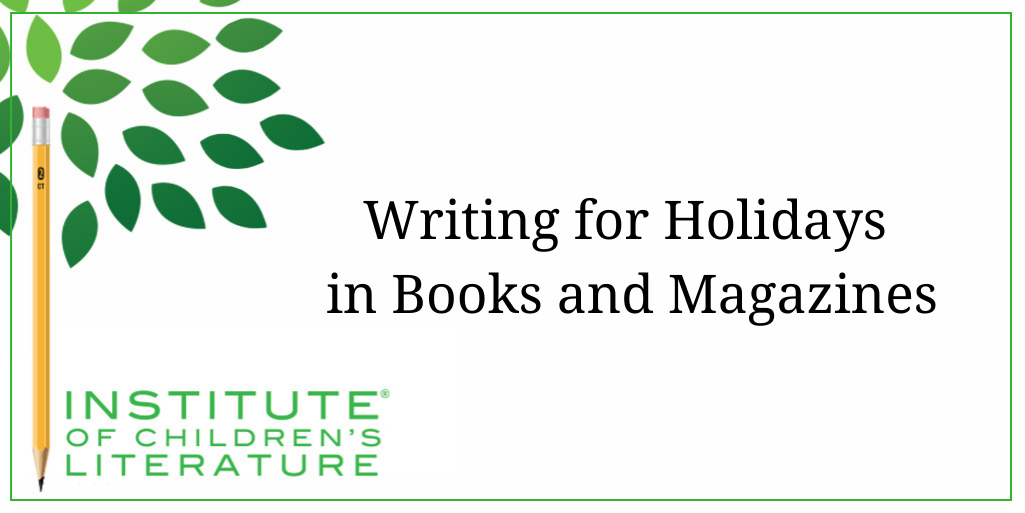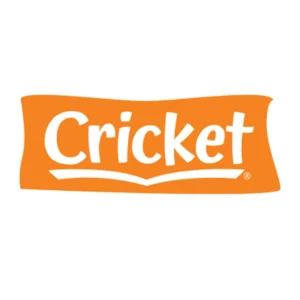
5 Ways Writers Can Prep for 2025 Goal Setting
Before we roll on to the new writing year, let’s harness our optimism for the blank slate before us and prepare for our 2025 Goal Setting just for writers.

All this month we’re going to look at specialty material written for books, short stories, poems, and articles that focus on holidays, first day of school, and seasons. Let’s begin with holidays since holiday material is a perennial favorite for kids.

Book publishers tend to focus on the bigger holidays where the most sales are likely, but that doesn’t mean smaller holidays are ignored. It simply means that a Seis de Septembre or a Holi picture book must be truly extraordinary to make a publisher fall in love.
Because young readers love the holidays (as do many of their book or subscription-buying adults), this means that every year offers new opportunity for holiday stories, but it doesn’t mean that holiday stories aren’t without challenges. Holiday stories can result in upset readers (or parents) as easily as delighted ones. Adults can be very attached to one specific holiday tradition and dislike seeing elements they don’t include in their own celebrations. Because magazines are especially sensitive to the problem of losing readers, this sensitivity in the adults who buy subscriptions mean that magazines in particular tend to tread very carefully around holiday stories and articles. And religious holidays can be especially tricky.

Religious markets, on the other hand, tend to shy away from secular aspects of religious holidays. Religious Easter picture books don’t generally include bunnies delivering eggs, religious Christmas stories won’t have Santa, and religious publishers usually shy away from Halloween completely in favor of more “harvest” focused books for the season (but are often interested in and even eager to receive Thanksgiving stories.)
All of this amounts to the importance of knowing your publisher well. For book publishers, this includes checking out what holiday books are already part of their line. How are they dealing with religious traditions for the holiday? And does there seem to be room for another holiday book for that particular holiday? For magazines, this can require you lay hands on a few holiday issues. For the largest magazine publishers, this can mean reading back issues at your public library. For smaller magazines, it can mean buying specific back issues (which may be available online). Few, if any, writer’s guidelines spell out the magazine’s view on holidays so you’ll only know if you get sample issues that correspond to holiday time. And read the sample issues carefully. If you see a puzzle with Santa, don’t assume they’ll take a Santa story. If you see a story about a Halloween party, don’t assume they’ll take a story about a witch’s ball. As a general rule of thumb, remember, the younger the reader, the more conservatively the magazine will treat holiday time. Some magazines won’t touch religious holidays at all for very young children to avoid confusion.
But keep in mind, if you do send a holiday story that doesn’t work for a specific publisher, the worst you get is a rejection letter. Sometimes it’s worth the risk to send a story you believe in to a publisher you can’t quite pin down on their preferences. Even if the story doesn’t sell, you might make a positive connection that has the publisher inviting more submissions from you.
Some of the easiest holiday pieces to sell to magazines are holiday-themed crafts, recipes, and activities. Magazines that wouldn’t ever consider a Santa story, may be interested in crafts that make reindeer-shaped treats. Magazines that generally avoid religious holidays may be open to an interesting take on making a Chanukah dreidel. And most will look at crafts that create things that are holiday-related in a more subtle way such a wreaths, bells, holly, gifts, and other motifs we think of as related to Christmas.

With seasonal recipes, the uniqueness often comes from something interesting outside of the normal ingredients for the food. For example, you might create a holiday themed chocolate chip cookie recipe that simply used red-and-green M&Ms instead of chocolate chips.
Small changes to tweak a recipe toward a holiday theme are often enough, especially if you add in a unique presentation. For example, a treat rolled in red sugar might be called “a reindeer nose” and then it becomes a holiday recipe.
Holiday riddles, jokes, and puzzles are also an option with many magazines. In holiday magazine issues, you might sell a Santa joke, even with a magazine that wouldn’t buy a Santa story. If you want to try a good holiday joke, try making a list of all the words you might associate with the holiday.
So for Christmas, I might come up with things like Klaus, Kringle, snow, reindeer, elves, etc, as well as some more complicated things you might associate with him like Naughty and Nice lists, his red suit, or a belly that shakes like a bowl of jelly. Make the list as long as you can, and then begin brain storming jokes based on any play on words or sounds you might come up with from the list.
Don’t limit yourself too quickly. It’s okay to come up with some really bad jokes in pursuit of the one or two that will be perfect for submission. Thus you might come up with a joke like “What’s Santa’s favorite vacation spot? Nice,” and not decide ultimately to send out that one. Keep in mind that you have to avoid trademark names for most magazines, so a joke like “What is Santa’s favorite candy? Jelly Bellies,” won’t work as well because Jelly Belly is a registered trademark.
Though selling holiday fiction can be challenging, it’s certainly not impossible to write and sell holiday fiction for magazines or books. Book publishers produce a handful of holiday books every year, and some of the most popular can become classics that are read year after year. Many magazines often produce holiday stories, so the market is there, but it’s also already a bit jaded. Publishers are looking for stories they haven’t already seen many, many times. They want a fresh take or characters that are so charming they cannot be passed up.

Funny or friendly versions of these creatures might appear in picture books, but not so often in magazine stories. Since some parents don’t like creepy creatures (even when portrayed as friendly), many magazines won’t run them. Sometimes this can be affected by the age of the reader. For instance, the Cricket family seems comfortable with wizards and magic (and they’ve even done ghost stories in the older reader magazines), but they don’t do this kind of content for the picture book aged reader.
If you are writing for some of the most popular holidays (Christmas, Easter, or Halloween), keep in mind that editors have seen literally hundreds of manuscripts for these holidays. You’re going to need to go in a different direction. Some writers do so by taking the story into the past and creating a mix of holiday fiction and historical fiction. Some writers do it by approaching the holiday from an unusual family situation (homeless people and holidays, for example) or an unusual location (someone spending their first Christmas on Mars, maybe?). Approaching holiday fiction with something new and unexpected will strongly increase your chance of publication.
For all the cautions and care, here’s a bit of good news. Most editors say they don’t get enough appropriate holiday material. The material has to reflect that publisher’s policies but when you are familiar with a what a publisher needs and you can make a match, you’ll find editors are receptive to your work. So good luck and happy holidays!
With over 100 books in publication, Jan Fields writes both chapter books for children and mystery novels for adults. She’s also known for a variety of experiences teaching writing, from one session SCBWI events to lengthier Highlights Foundation workshops to these blog posts for the Institute of Children’s Literature. As a former ICL instructor, Jan enjoys equipping writers for success in whatever way she can.

Before we roll on to the new writing year, let’s harness our optimism for the blank slate before us and prepare for our 2025 Goal Setting just for writers.

Writers can be thin-skinned when it comes to getting feedback on their work. Let’s look at 4 ways to positively deal with constructive criticism!

Rejection is part of the territory when it comes to being a writer. Today we offer reflection for writers to help redirect your efforts after a rejection.
1000 N. West Street #1200, Wilmington, DE 19801
© 2024 Direct Learning Systems, Inc. All rights reserved.
1000 N. West Street #1200, Wilmington, DE 19801
© 2024 Direct Learning Systems, Inc. All rights reserved.
1000 N. West Street #1200, Wilmington, DE 19801
© 2024 Direct Learning Systems, Inc. All rights reserved.
1000 N. West Street #1200, Wilmington, DE 19801
© 2024 Direct Learning Systems, Inc. All rights reserved.

1000 N. West Street #1200, Wilmington, DE 19801
© 2025 Direct Learning Systems, Inc. All rights reserved.

1000 N. West Street #1200, Wilmington, DE 19801
©2025 Direct Learning Systems, Inc. All rights reserved. Privacy Policy.
5 Comments
Thank you for this information. I think I’m going to give my story another try with book publishers. As you said, after I send (after researching some more), all they could say is, “Yes” or “No.” I had this story critiqued at various writing conferences. It features Santa and the Easter Bunny. The general concensus was it’s a cute and/or original idea. I had some story revision suggestions, but the main topic that had me hesitating in sending were about marketing. While Santa is in it, it’s primarily set during Easter. A few agents thought it could be sold for both holidays, but one editor had told me this is more for Easter and fewer books are sold during this holiday so he didn’t see the marketability in it. Another editor had said she had trouble visualizing because colors in Christmas-time story are primary, but pastels are usually used for Easter. These two editors made me feel it wasn’t marketable. But thanks to this article, I’m going to dust it off, check to see where it wasn’t sent, check their catalogs, and resend.
Hi Barbara. I hope you end up with a win on the book. All the issues with marketing are valid, but books can sometimes surprise everyone and become children’s favorites. You only have to find one publisher who is willing to take a chance, but sometimes that can be quite the callenge.